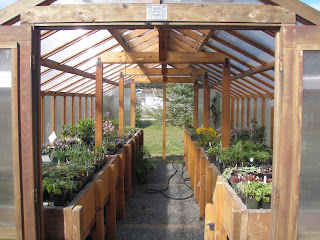
Had the opportunity to leave the nursery today and get out into nature, a wonderful riverside walk and could not believe the amount of gorgeous native plants I saw, it was like I was looking through new eyes. Some of the things we encountered:
Trillium ovatum, Thalictrum, Lilium columbianum, Disporum, Viola (both the blue and the yellow), Wild Ginger, Devils Club, Erythronium(now in seed mode), Twin flower, Smilacena, Veratrum, Vanilla leaf, Linnaea, who needs banana plants when you can go into nature and admire skunk cabbage?
On another note I was listening to the radio about a study just completed on pesticide use and its affect on leading to Attention Deficit Disorder in children and other problems.
It mentioned that the organophosphorus pesticides have the most damaging effects.
After working in horticulture for twenty five years I am now finally realizing the impact and severity of these chemicals and want no involvement with them in my business.
I have always been reluctant about using some of the chemicals I was dealing with while working for other nurseries and glad that I eventually refused to use certain products.
There are safer and healthier ways and it is always worth looking into them.
We owe it to the next generation.

















